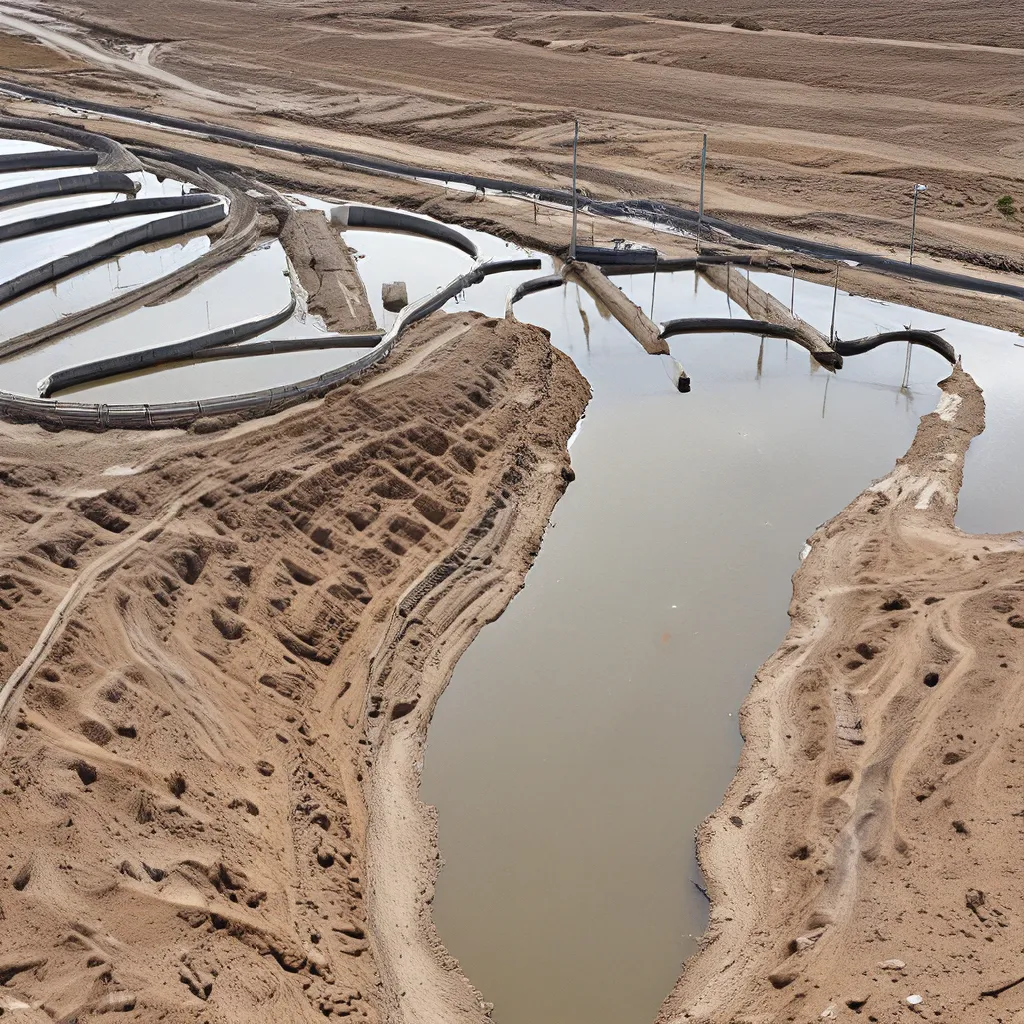
As an environmental enthusiast, I’ve always been fascinated by the intricate web of our water systems. It’s incredible to think that the very same water molecules have been recycled and reused for millions of years through the natural water cycle. But today, with growing populations, shifting climate patterns, and increased industrial demands, our traditional water sources are under immense strain. That’s why I’m excited to dive into the world of wastewater reuse and how it’s playing a pivotal role in addressing the global challenge of water scarcity.
Unlocking the Potential of Wastewater
Let’s start by acknowledging the obvious – water is an incredibly precious resource. Yet, in many parts of the world, we’ve been treating it as a seemingly endless commodity. We draw from our lakes, rivers, and aquifers, use it, and then discharge the wastewater back into the environment, often with little to no treatment. This linear approach is simply not sustainable in the long run.
But what if I told you that there’s a way to close this loop and transform our wastewater into a reliable, renewable water source? That’s where wastewater reuse comes into play. By leveraging advanced treatment technologies, we can purify wastewater to a level that makes it suitable for a variety of beneficial uses, from agricultural irrigation to groundwater replenishment.
The Aquifer Replenishment Approach
One particularly innovative application of wastewater reuse is aquifer replenishment. This involves taking treated wastewater and intentionally recharging it back into underground aquifers. These vast, naturally occurring groundwater reservoirs can serve as long-term storage for excess water, allowing us to create a buffer against drought-induced shortages.
The beauty of this approach lies in its elegance. Aquifers provide a level of natural filtration and protection that surface reservoirs simply can’t match. They prevent water loss through evaporation, shield against pollution, and can store much larger volumes. And by using treated wastewater as the recharge source, we’re not only replenishing depleted groundwater supplies, but we’re also reducing the pressure on our precious surface water bodies.
Overcoming the Challenges
Of course, implementing a successful aquifer replenishment project isn’t as simple as just pouring water into the ground. There are a number of technical, regulatory, and social considerations that need to be carefully navigated.
From a technical standpoint, the feasibility of an aquifer replenishment project hinges on a detailed assessment of the target aquifer’s geological and hydrogeological characteristics. Things like water quality, flow rates, and potential interactions with the aquifer material all need to be thoroughly evaluated. Pilot testing and monitoring systems are often crucial to ensure the long-term viability of the project.
On the regulatory front, aquifer replenishment initiatives require a complex web of permits and approvals from local, state, and federal authorities. Water rights, environmental impact assessments, and public health considerations all come into play. Navigating this bureaucratic landscape can be a daunting task, but it’s essential for ensuring the responsible and sustainable management of our water resources.
Perhaps the biggest hurdle, though, is the social acceptance of wastewater reuse. Some people are understandably hesitant about the idea of drinking water that was once part of the sewer system. Overcoming these psychological barriers requires a concerted effort in public education and outreach, highlighting the rigorous treatment processes and the proven safety record of these projects.
A Case Study in Aquifer Replenishment
One community that’s leading the charge in this arena is the city of Provo, Utah. Faced with rapid population growth and a dwindling groundwater supply, Provo partnered with the team at Alpha Wastewater to develop an ambitious aquifer replenishment program.
The plan involves using excess surface water and treated wastewater effluent to recharge the aquifer underlying the city. Through a combination of infiltration basins and direct injection wells, the team is able to store water underground during wet periods and then recover it during times of drought or increased demand.
But Provo’s story isn’t just about the technical details. It’s also about engaging the community, addressing their concerns, and building trust. The city has gone to great lengths to educate residents on the safety and benefits of aquifer replenishment, even hosting tours of the pilot project sites.
“It’s all about transparency,” explains Brian LeMon, the vice president and senior civil engineer leading the Provo initiative. “We want the community to understand exactly how this system works, from the treatment processes to the long-term monitoring. That way, they can see for themselves how we’re ensuring the protection of our precious water resources.“
The Future of Wastewater Reuse
As the world grapples with the realities of climate change and growing populations, the need for innovative water management solutions has never been more pressing. And aquifer replenishment through wastewater reuse is proving to be a game-changer.
Beyond just mitigating water shortages, these projects can also serve as a barrier against contaminant plumes, prevent saltwater intrusion, and protect against ground subsidence caused by over-pumping of groundwater. The potential benefits are truly far-reaching.
Of course, the path forward is not without its challenges. Ongoing research and pilot studies are still needed to refine the processes and address any remaining concerns. But the momentum is building, and more and more communities are recognizing the value of this sustainable, resilient approach to water management.
So, as I look to the future, I can’t help but feel a sense of optimism. Wastewater reuse and aquifer replenishment are not just innovative strategies – they’re essential tools in our arsenal as we work to secure a sustainable water future for generations to come. The more we can embrace this circular approach to water, the better off we’ll all be.